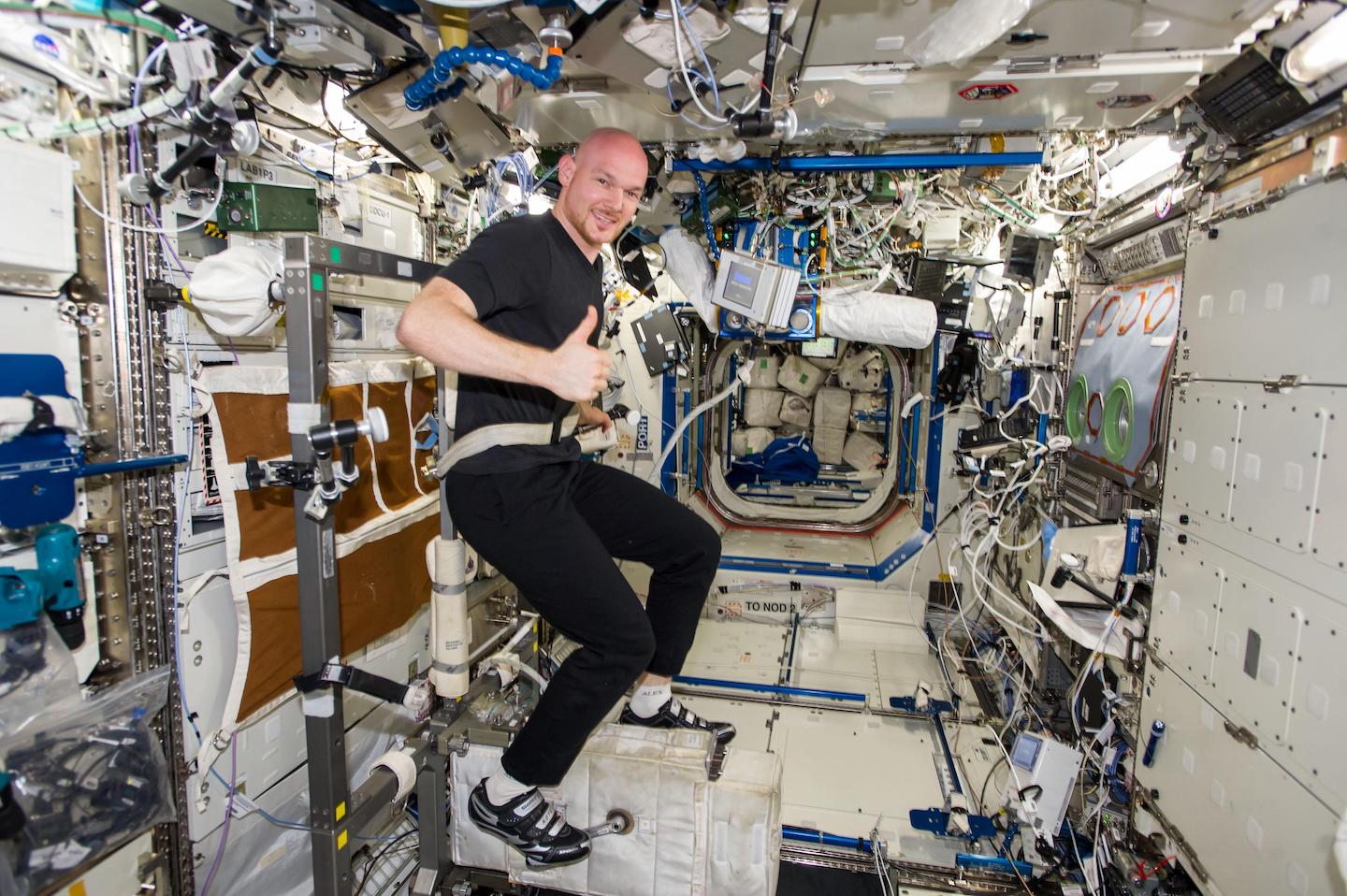The experiment is aimed to assess new fabrics to determine how the lack of gravity affects the way heat and sweat is transported through clothing that is worn next to the skin, improve the heat transfer and also analyze antibacterial properties.
In conditions of space microgravity the thermal regulation capacity of the human body is reduced as heat and sweat are not transported onto clothing or into the environment and instead envelope the body not allowing it to cool down and increasing the physical strain during exercise in space. This can become a problem if high environmental temperature and humidity prevail during heavy physical workloads, can lead to loss of comfort or even heat stress related injuries such as heat strokes
DAC has supported the SpaceTex experiment with ESA astronaut Alexander Gerst.aboard ISS. Gerst tested new fabrics on two sets of clothes during 4 days. After daily training sessions with the CEVIS Cycle Ergometer he filled in a short questionnaire to assess how comfortable clothes felt and different parameters. Clothes were later stored in a bag together with a diffusion collector tube to be returned to earth and later analyze odor and air quality.
The results will be of interest to develop future clothing for astronauts which can improve exercise and physical activity on future space missions, as well it will help sportswear manufacturers improve clothing products for extreme condition activities on Earth.

Sweat & Heat Transport in 1G and Zero-G (Image: Hohenstein)


